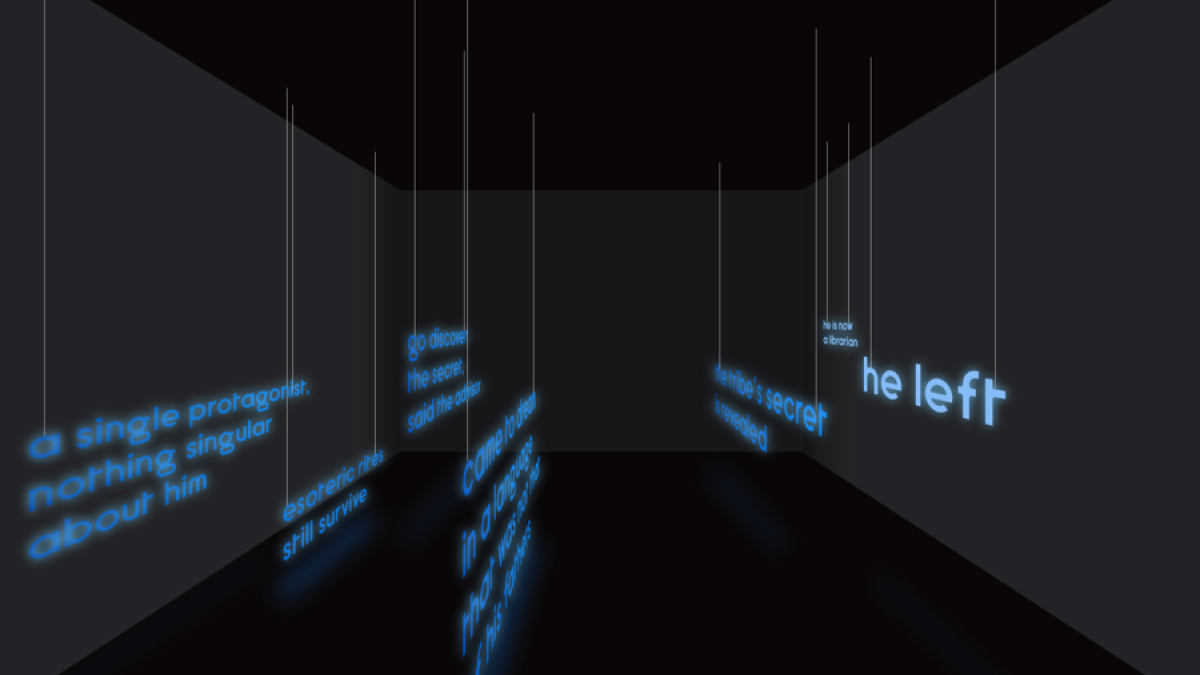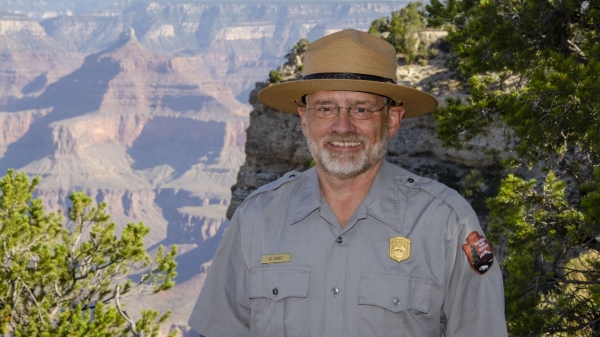ASU Art Museum, ASU Library present Visual LIT series

Fiamma Montezemolo's "Neon Afterwords" is the first artwork in ASU's Visual LIT series.
Visual LIT is a collaboration between the ASU Library and the ASU Art Museum that brings together visual artists interested in exploring different aspects of the library — from antique books to future modes of communication. The four participating artists are Fiamma Montezemolo, Euan Macdonald, Zhou Tao and Faivovich & Goldberg.
The first installation is Fiamma Montezemolo’s project “Neon Afterwords,” which was exhibited in the C2 Upper Concourse from March 20 to 31 and her video installation “Rastos/Traces,” which will be exhibited underneath the south stairway on the first floor from April 5 to May 31.
“Neon Afterwords” is an immersive installation, in which seven sentences, written in fluorescent LED blue light tubes, float at different heights in the dark space of a room. The sentences are extracted from Borges' short story "The Anthropologist" (1969). In an adjacent room, three books containing the mentioned story are exhibited with the key LED sentences redacted with a blue tape. The story is therefore disseminated in different spaces.
Thanks to her double training as artist and anthropologist, Montezemolo reflects more on the central moment of an anthropologist's formation: the fieldwork. This piece carries an additional reference to the use of neon light in the typical space of artistic Italian research in the Post-War era, from the famous neon arabesque by Lucio Fontana for the Triennale of 1951 to Mario Merz's Igloo. The piece “Neon Afterwords” was originally produced by the Italian Cultural Institute of San Francisco in the cycle Mapping the City, curated by Marina Pugliese.
“Rastros/Traces” is an experimental video essay based on the border life between the United States and Mexico. Shot in a span of 24 hours, the video examines the border wall that separates Tijuana and San Diego. Images of a rusty wall, unruly topography, decaying surveillance structures, furtive moments of undocumented migrant crossings and dystopian landscapes are interwoven with a mournful voice-over enunciated from a different time and place.
In recent times, libraries have been conscientiously building collections that respond to the changing needs and demands of their communities. Visual LIT attempts to continue this trajectory with a new focus on what is traditionally known in the library as a pathfinder — someone who gathers information in a specific location or area of study within a library. Artists will adopt this role and creatively help guide specific research topics, or, in art terms, site-specific research, to the location of the library. By bringing installation in video, sculpture and sound, they will conceive new experiences for library-goers that allow interconnectivity between the written word and the visual language.
This exhibition is supported by the Italian Cultural Institute of San Francisco and Mapping the City.
More Arts, humanities and education

Grand Canyon National Park superintendent visits ASU, shares about efforts to welcome Indigenous voices back into the park
There are 11 tribes who have historic connections to the land and resources in the Grand Canyon National Park. Sadly, when the…
ASU film professor part of 'Cyberpunk' exhibit at Academy Museum in LA
Arizona State University filmmaker Alex Rivera sees cyberpunk as a perfect vehicle to represent the Latino experience.Cyberpunk…

Honoring innovative practices, impact in the field of American Indian studies
American Indian Studies at Arizona State University will host a panel event to celebrate the release of “From the Skin,” a…